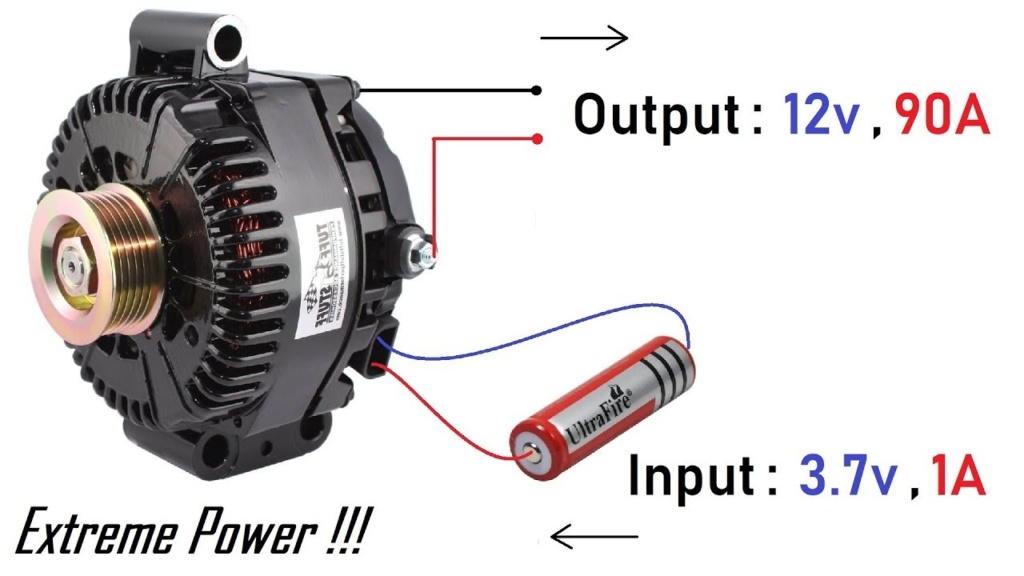The alternator is a crucial component in your vehicle’s electrical system, responsible for generating the electrical power needed to run various systems and charge the battery. A properly functioning alternator Output Voltage ensures that your car operates smoothly, but issues with its output voltage can lead to a range of problems. Understanding common issues with alternator output voltage and how to address them is essential for maintaining your vehicle’s reliability. In this complete guide, we’ll explore the common problems associated with alternator output voltage and provide practical solutions to keep your vehicle running efficiently.
1. Understanding Alternator Output Voltage
Before diving into the issues, it’s important to understand what alternator output voltage is and how it affects your vehicle. The alternator generates electricity through the process of electromagnetic induction, converting mechanical energy from the engine into electrical energy. The output voltage of an alternator Output Voltage typically ranges between 13.8 to 14.8 volts when the engine is running. This voltage is necessary to charge the battery and power the vehicle’s electrical systems, including lights, radio, and air conditioning.
2. Low Alternator Output Voltage
Symptoms:
- Dim headlights
- Electrical accessories malfunctioning
- Warning lights on the dashboard
- Difficulty starting the vehicle
Causes:
- Worn Brushes: The brushes inside the alternator make contact with the rotor, and over time, they can wear out, reducing the output voltage.
- Faulty Voltage Regulator: The voltage regulator controls the alternator output voltage. If it fails, the alternator may produce insufficient voltage.
- Bad Alternator Diodes: Alternators contain diodes that convert AC voltage to DC. If these diodes fail, the alternator might not produce adequate voltage.
- Loose or Corroded Connections: Loose or corroded connections between the alternator and the battery can impede the flow of electricity.
Fixes:
- Replace Worn Brushes: If the brushes are worn, replacing them can restore proper voltage output. This typically requires removing the alternator and disassembling it to access the brushes.
- Replace the Voltage Regulator: If the voltage regulator is faulty, replacing it with a new one should resolve the issue. Some alternators have a built-in regulator, while others have an external unit.
- Test and Replace Diodes: Testing the alternator’s diodes with a multimeter can help identify if they are the issue. If faulty, the alternator Output Voltage may need to be rebuilt or replaced.
- Check and Clean Connections: Ensure all connections between the alternator, battery, and other electrical components are clean and secure. Tighten any loose connections and clean any corrosion.

3. High Alternator Output Voltage
Symptoms:
- Battery overheating
- Electrical components malfunctioning
- Frequent battery replacements
- Burning smell
Causes:
- Faulty Voltage Regulator: A malfunctioning voltage regulator can cause the alternator to produce too much voltage, which can overcharge the battery.
- Defective Alternator: In some cases, the alternator itself might be defective and produce excessive voltage.
- Incorrect Belt Tension: If the alternator belt is too tight, it can affect the alternator Output Voltage performance and lead to high voltage output.
Fixes:
- Replace the Voltage Regulator: If the voltage regulator is faulty and causing high output voltage, replacing it should resolve the problem. As with low voltage issues, the regulator can be either internal or external.
- Inspect and Replace the Alternator: If the alternator is defective, it may need to be replaced. Testing the alternator with a multimeter can help confirm if it’s producing excessive voltage.
- Adjust Belt Tension: Ensure that the alternator belt is properly tensioned. Refer to the vehicle’s service manual for the correct tension specifications and adjust accordingly.

4. Intermittent Alternator Output Voltage
Symptoms:
- Fluctuating dashboard lights
- Intermittent electrical issues
- Unpredictable starting problems
Causes:
- Loose or Faulty Wiring: Loose or intermittent connections in the wiring harness can cause fluctuating voltage output.
- Faulty Alternator Bearings: Worn or damaged bearings in the alternator can cause inconsistent performance and voltage output.
- Poor Battery Connections: Corroded or loose battery terminals can lead to erratic alternator performance.
Fixes:
- Inspect and Repair Wiring: Check all wiring and connections related to the alternator for any signs of damage or looseness. Repair or replace faulty wiring as needed.
- Replace Alternator Bearings: If the alternator bearings are causing intermittent issues, they may need to be replaced. This typically requires professional service or a complete alternator replacement.
- Clean Battery Terminals: Ensure that the battery terminals are clean and securely connected. Corrosion can be cleaned with a mixture of baking soda and water.

5. Overcharging and Battery Damage
Symptoms:
- Battery swelling or leaking
- Acid fumes or corrosion around the battery
- Rapid deterioration of battery life
Causes:
- Overcharging Due to High Voltage: An alternator that consistently outputs too much voltage can overcharge the battery, leading to damage.
- Faulty Alternator Components: Internal
components in the alternator, such as the rectifier or voltage regulator, can cause overcharging if they fail.
Fixes:
- Monitor Charging Voltage: Use a multimeter to regularly check the alternator’s charging voltage. It should stay within the 13.8 to 14.8-volt range. If it exceeds this range, further investigation is needed.
- Replace Faulty Components: If overcharging is due to defective internal alternator components, the alternator should be either repaired or replaced. In many cases, replacing the alternator is the most straightforward solution.
- Check Battery Health: If the battery has been overcharged, it might need to be replaced. Inspect the battery for signs of damage, such as swelling or leaking, and replace it if necessary.
6. Preventative Maintenance Tips
To avoid future issues with alternator output voltage and ensure the longevity of your vehicle’s electrical system consider these preventative maintenance tips:
- Regular Inspections: Schedule regular inspections of your vehicle’s alternator and electrical system. Early detection of issues can prevent more severe problems down the line.
- Keep Connections Clean: Regularly check and clean all electrical connections to prevent corrosion and ensure proper conductivity.
- Replace Worn Parts Promptly: Address any signs of wear or malfunction in the alternator or associated components as soon as they arise. Delaying repairs can lead to more extensive damage and costly repairs.
- Use Quality Parts: When replacing alternator components or the entire unit, use high-quality, OEM (Original Equipment Manufacturer) parts to ensure optimal performance and compatibility.
7. Professional Help
While some alternator issues can be addressed with basic tools and knowledge, others may require professional assistance. If you’re not comfortable diagnosing or repairing alternator problems yourself, or if you encounter complex issues, it’s wise to consult a professional mechanic. They can perform detailed diagnostics, provide expert repairs, and ensure that your vehicle’s electrical system is functioning correctly.
Conclusion
Maintaining proper alternator output voltage is crucial for the reliable operation of your vehicle. Understanding common issues, such as low or high output voltage, intermittent performance, and overcharging, can help you identify and address problems before they escalate. By following the fixes and preventative maintenance tips outlined in this guide, you can keep your alternator in top condition and ensure that your vehicle’s electrical system remains dependable.
Remember, regular inspections and timely repairs are key to avoiding costly repairs and maintaining your vehicle’s overall performance. Whether you choose to tackle minor issues yourself or seek professional help for more complex problems, staying proactive about alternator maintenance will contribute to a smoother, more reliable driving experience.




